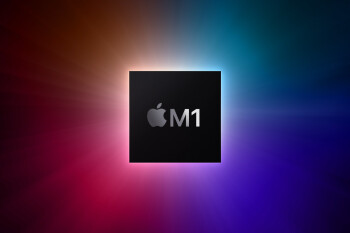Probably the last Apple event for 2020 just ended and as we all expected, Apple announced new MacBooks and a new Mac Mini. But unlike the usual specs refresh, these devices are the beginning of a new era for Apple. And ushering Apple into this new era is the newly announced M1 chip. The M1 chip takes the advantages of the Arm architecture, which has served mobile phones so well for many years now to bring Mac computers to new productivity heights.
So, what’s so good about this chip? Let’s take a look!
Apple M1 chip structure
Perhaps the biggest advantage of the M1 chip is that it brings the system-on-a-chip philosophy we’re familiar with from smartphones to computers. Within the M1 chip are the CPU, the GPU, the memory, the neural engine and the cache. This makes data transfers between the components lightning fast and reduces the size of the computer’s main board, leaving more room for the batteries, for example. The chip is built on the 5nm process and packs 16 billion transistors, almost 50% more than the A14 Bionic’s 11.8 billion.
The CPU of the M1 is has eight cores, with four high-performance cores and four high-efficiency cores for less demanding tasks. As with phones, this leads to greater power efficiency since the powerful cores are only activated when needed. According to Apple, the M1 chip offers the best CPU performance per watt in the world. The CPU is also up to two times more powerful than the latest PC laptop chip, however, Apple didn’t specify which chip that is, so we’ll have to see actual benchmarks for that claim.
The situation is similar with the M1’s GPU. It has eight cores as well, although there’s no division between their productivity. The performance gains are also around 2X according to Apple, when comparing it to a mysterious PC laptop chip’s GPU. Still, Apple promises enough horsepower within it to effectively edit 4K footage and play video games.
Both the CPU and the GPU share 8GB of RAM, which is packed in the chip, as we already said. That’s not a lot, but it seems like according to Apple it’s enough for the type of devices the M1 is powering and future M chips will likely have more.
Apple M1 chip benefits
Few people care about the specifications of the chips that power their devices. They care about how these chips will benefit them in the real world. And apart from the aforementioned performance boosts, there are several key benefits from Apple’s transition to the M1 chip.
Improved responsiveness and instant wake up
When your phone is locked, it takes less than a second before you can start using it. Well, with the new chip, the same will be true for Apple’s MacBooks as well. You open the lid or press the power button, and it’s ready for work before you put your hands on the keyboard. For a mobile machine you might move around with and open/close multiple times a day, that’s certainly a great benefit to have.
Super-long battery life
A few factors come in play for this benefit. First, the 5nm architecture in itself makes the chip more power-efficient. Then we have the load distribution between the two types of cores, which further improves efficiency. And when you add to those the fact that the laptop’s main board is smaller, leaving more room for batteries, you get to the stunning numbers we heard today. The MacBook Air can last up to 18 hours of video playback and the MacBook Pro pushes that number to 20. Needless to say, you’ll be able to easily go to school or work without bringing the MacBook’s charger.
Quietness
The improved efficiency of the M1 chip also means less heat to deal with, which means less fan noise. In fact, the MacBook Air will have no fans at all, meaning the loudest noise you’ll hear from it will be that of a button’s key press. The MacBook Pro will have active cooling on board, but that will probably activate only during prolonged use of the high-power cores of the M1 chip, which for most users shouldn’t be very often.
iOS app compatibility
Since the M1 chip shares the same fundamental architecture as the chips found in Apple’s iPhones and iPads, the apps created for them can seamlessly run on the new MacBooks and Apple is introducing that future in its new Big Sur operating system. From mobile games to messaging apps, you’ll be able to use everything on your MacBook, even several at once.
What does the M1 chip mean for smartphones?
While the M1 chip is specially designed for larger devices in mind, it can easily be used as an example of where we’re headed when smartphone performance is concerned. It might not be next year, but sooner rather than later, the performance we’re seeing from the M1 chip will fit into the footprint of a smartphone chip. Desktop experiences already exist on mobile, for example Samsung’s Dex, but they’re still not quite the replacement for our PC that we’re hoping for.
But today, Apple laid the foundation of just that. And if now we’re more interested in iOS apps running on a MacBook, the important thing is that the software developed for these MacBooks will easily work on iPhones a couple of years from now. All you’ll need is some peripherals and a monitor or a TV and you’ll be set for desktop-grade productivity with just a phone in your pocket.
Source: Phonearena







Comments